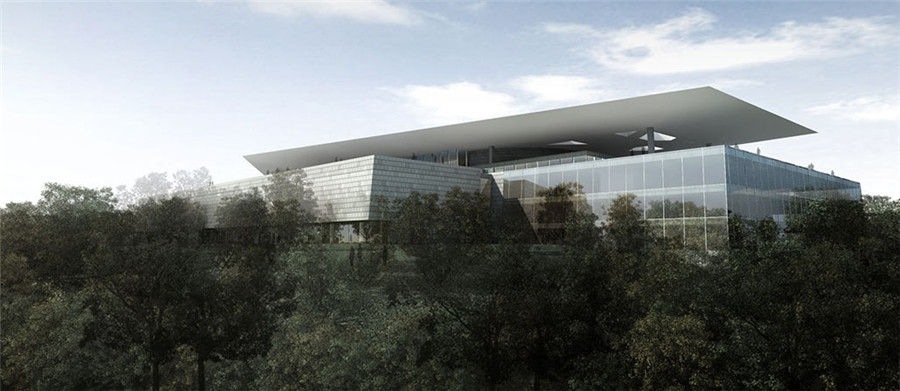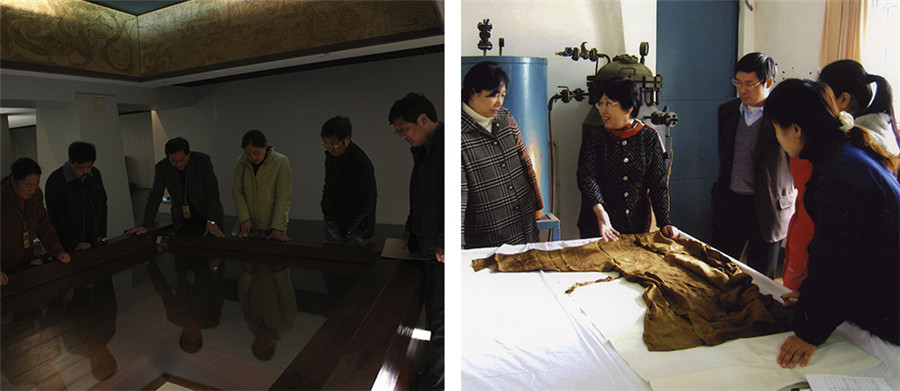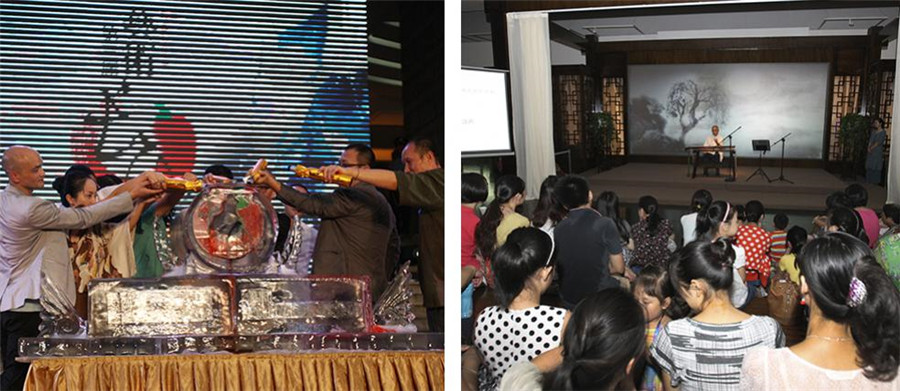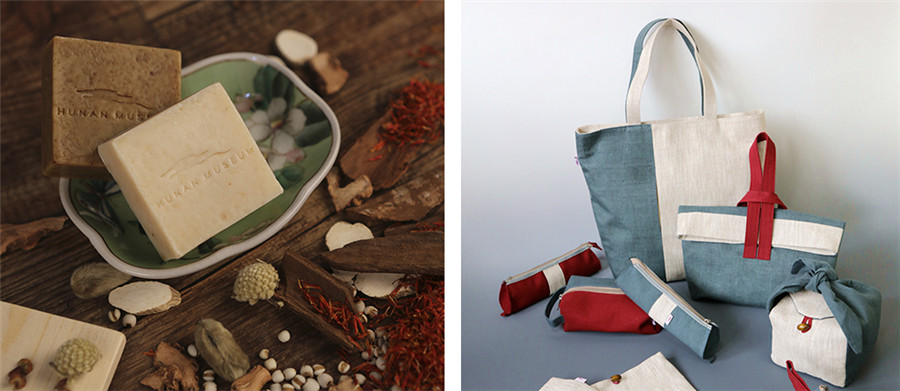Hunan Provincial Museum in Changsha
Introduction to the Museum
As the largest history and art museum in Hunan province, the Hunan Museum covers an area of 49,000㎡, with the building area reaching 91,000㎡. It is one of the first batch of national first-level museums and one of the first eight national museums co-funded by central and local governments.
For several decades, the museum as a cultural landmark in Changsha city, has attracted millions of visitors. It not only presents the Chinese civilization along the middle reaches of the Yangtze River but also serves as a unique window for people to understand the development of the civilization in Hunan province as well as to appreciate the mysteries of Hunan culture.
With a history over half a century, the Hunan Museum has made remarkable achievements in exhibitions, social education, public services, development and innovation of cultural and creative products, operations and management. It has become one of the most influential museums in China and one of the most advanced museums in the international arena.

Collections and Exhibitions
Boasting abundant collections, the museum houses over 180,000 artifacts, which feature the cultural relics excavated from the world-famous Mawangdui Tombs of Han Dynasty, the bronze wares of the Shang and Zhou Dynasties, cultural relics of Chu State, pottery and porcelain works from various dynasties, calligraphy works and paintings, religious objects, handicrafts and cultural relics of modern times.
In order to fully display these cultural treasures in the museum, the Museum conducts in-depth research on the cultural relics and stages two permanent exhibitions and four themed exhibitions by utilizing modern display technology. The two permanent exhibitions are The Mawangdui Han Dynasty Tombs in Changsha, Hunanese-Exhibition of Hunan History and Culture. The four themed exhibitions cover the themes of bronze wares, ceramics, calligraphies and paintings, and crafts respectively. In addition, the museum will introduce and launch various special exhibitions from abroad with rich content. It showcases civilizations and splendid cultures around the world as well as displays and spreads the culture of Hunan province. It has already established itself as an institution with high professionalism specialized in display and communication among the general public and maintained close ties with them.

Service and Education
As a public cultural institution, the museum follows the principle of “people first and serving the society” and substantially enhances its service by adopting the ISO9001 quality management system and ISO14001 environment management system. What’s worth noting is that since the adoption of free admission policy on March 20, 2008, the museum has been extending quality service to every visitor and conducting new experiments and introducing new practices. It has been highly praised by China’s Ministry of Culture and State Administration of Cultural Heritage as one of the top museums in the national cultural system. What’s more, in order to improve visitor’s appreciation ability and stimulate their interests, the museum provides multi-level, multi-form and multi-type educational services to meet the needs of different visitors, such as guided tours, lectures, Members’ Activities, Family Days, and Teachers’ Salons. It strives to build a comprehensive museum educational system.

Preservation of Cultural Relics and Scientific Research
The Hunan Museum holds the qualifications of First Rate Removable Relics Technology Preservation Design and First Class Removable Relics Restoration. With its collections, the museum actively engages in the preservation and utilization of cultural relics and strives to make technological breakthroughs. Substantial achievements have been made in the following fields: derusting and renovation of metallic relics, protection and restoration of ceramics, restoration of paper relics and so on. The museum boasts the most advanced technology in terms of the following areas: dehydration of lacquerwares, protection and cleaning of textiles, the protection of Mawangdui Cadaver. In addition, it has established sound academic traditions and a favorable academic environment in the following fields: study of museology, research and appreciation of cultural relics, protection and restoration of cultural relics, education and publicity. Its scientific research is developing with considerable momentum in an all round manner with a multidisciplinary trend. In recent years, the museum has carried out many research projects, such as projects supported by the National Social Science Foundation of China, National Science-technology Support Plan Projects and key projects supported by the State Administration of Cultural Heritage. Moreover, Journal of Hunan Provincial Museum and Almanac of Hunan Provincial Museum as well as many important exhibition catalogues have been published by the museum.

Exchanges and Cooperation
Under the guidance of the “bring in” and “go global” strategies, the museum has conducted cultural exchanges with more than 30 countries and regions around the world. Delegates from the UN, delegates from the PIP of National Committee on United States-China Relations, President of Sierra Leone, Prime Minister of Vanuatu and Prime Minister of Singapore and many other important persons have visited the museum. For consecutive years, the museum sends professionals to Brazil, Italy, Serbia and other countries or regions to attend annual conferences or symposiums organized by the International Council of Museums (ICOM). The head of the museum is invited by American Alliance of Museums (AAM) every year to attend its annual conference and to make a keynote speech. In terms of the exchanges of exhibitions, the museum staged many exhibitions based on its own collections in many countries and regions, including United States, France, UK, Italy, Switzerland, Sweden, Mexico, Netherland, Yugoslavia, South Korean, Japan, Tunisia and Singapore. The museum has signed a series of important Memorandums of Understanding with its international counterparts to work closely in terms of staff training, scientific research, preservation of collections, and museum governance and planning. Many achievements are being made thanks to the cooperation.

Cultural and Creative Industries
By fully understanding the research & development concept of “creative industries”, the Hunan Museum has always been devoted to exploring the special features of its collections and transforms them into museum cultural and creative products. With many years of efforts, it has launched more than 500 kinds of cultural and creative products. With the renovation and expansion project, the museum actively integrates external resources and takes full advantage of its brands resources, collections, projects, venues and the leading position in industrial management. The strategies of public service and cultural creativity of the new exhibition building has been formulated and the product development recognition system has been established. Under the guidance of the market, the visitor data has been collected and analyzed. The strategies of cultural creativity and development concept have been formulated. Research into and discussions of the brand planning and Intellectual Property Right Protection have been carried out. Since 2008, the cultural and creative products developed and designed by the Hunan Museum have received over 10 awards issued by the Tourism Expo and other organizations for their cultural creativity or advanced technology.

II. Mission
The Hunan Museum is a large history and art museum mainly showcasing the culture in Hunan Province. Based on its protection of cultural heritage, the museum is committed to spreading splendid cultures so as to motivate the public to participate and take a keen interest in cultural heritage. It strives to develop into an “Our Museum”, which is owned, built and shared together by the communities.
III. The Five-Year Development Plan for the Museum (2016-2020)
(i) Operational management: the museum will draw on the advanced theoretical research and experiences of other museums both at home and abroad, follow the related laws, regulations and policies in the museum industry, and explore and establish scientific, regulated, sound and orderly institutional operation and personnel management model, which are in line with the requirements of the museology and the right direction of the development of the Hunan Museum. The museum should mainly research on the new problems during the operation of modern museums, put forward solutions and suggestions, gain experiences and set a fine example for the establishment of the system of modern public welfare institutions.
(ii) Collection management and protection: making inventories and documentation and establish scientific and efficient mechanism regarding the management and protection of the collections.
(iii) Displays and exhibitions: the Hunan Museum will develop the exhibition planning concepts with a global vision, plan and introduce high-level exhibitions.
(iv) Scientific research: increase efforts to research on museum’s collections and related fields so as to improve its research abilities.
(v) Social education: to expand the function of social education by staging displays and exhibitions.。
(vi) Public service: enhance the staff’s awareness of public service and establish the quality and efficient public cultural service.
(vii) Smart museum: improve the information based system and build a smart museum.
(viii) Cultural innovation: build a new mode of cooperation and operation and establish characteristic resources brand and status.
(ix) Publicity, exchange and cooperation: strengthen its publicity and seek exchanges with other institutions, deepen international cooperation so as to exert great influence in the museum community both at home and abroad.
IV. Organization (subject to change according to the need of the new exhibition building)
At present, there are 22 departments in the Museum, including: General Affairs Office, Party Committee Office, Personnel and Education Section, Finance Section, Bidding and Purchasing Office, Logistics Department, Security Section, Inspection & Audit Department, Exhibition & Curatorial Department, Collection Preservation Department, Exhibition & Cultural Exchange Department, Center for the Technological Protection of Cultural Relics, Reception Department, Education Center, Public Relations Department, Information Center, Editing and Publishing Department, Research Center of Cultural and Creative Products, Research Office, Engineering Project Management Department, Design & Planning Office, Infrastructure and Collecting Department and the Union of Hunan Museum.











